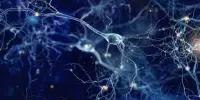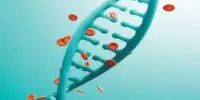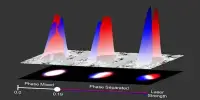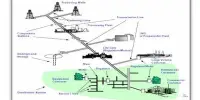A groundbreaking mathematical equation has been discovered that has the potential to transform future medical procedures, natural gas extraction, and plastic packaging production. The new equation, developed by scientists at the University of Bristol, indicates that for the first time, diffusive movement through permeable material can be precisely modelled.
It comes a century after world-renowned physicists Albert Einstein and Marian von Smoluchowski developed the first diffusion equation, and it represents significant progress in representing motion for a wide range of entities ranging from microscopic particles and natural organisms to man-made devices.
Scientists studying particle motion through porous materials such as biological tissues, polymers, various rocks, and sponges have had to rely on approximations or incomplete perspectives up until now. The findings, published in the journal Physical Review Research, describe a novel technique that opens up new possibilities in a variety of fields, including health, energy, and the food industry.
This new fundamental equation is another example of the importance of constructing tools and techniques to represent diffusion when space is heterogeneous, that is, when the underlying environment changes from location to location.
Dr. Luca Giuggioli
“This marks a fundamental step forward since Einstein and Smoluchowski’s studies on diffusion,” said lead author Toby Kay, who is completing a PhD in Engineering Mathematics. It completely transforms the modeling of diffusing entities in complex media at all scales, from cellular components and geological compounds to environmental habitats.
“Previously, mathematical attempts to represent movement through environments scattered with objects that hinder motion, known as permeable barriers, have been limited. By solving this problem, we are paving the way for exciting advances in many different sectors because permeable barriers are routinely encountered by animals, cellular organisms and humans.”
Creativity in mathematics takes different forms and one of these is the connection between different levels of description of a phenomenon. In this instance, by representing random motion in a microscopic fashion and then subsequently zooming out to describe the process macroscopically, it was possible to find the new equation.
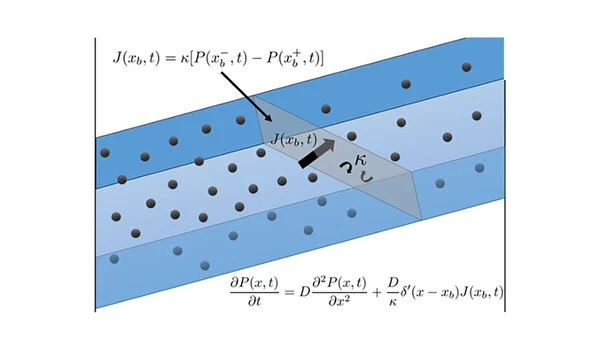
Further research is needed to apply this mathematical tool to experimental applications, which could improve products and services. For example, being able to model accurately the diffusion of water molecules through biological tissue will advance the interpretation of diffusion-weighted MRI (Magnetic Resonance Imaging) readings. It could also offer more accurate representation of air spreading through food packaging materials, helping to determine shelf life and contamination risk. In addition, quantifying the behaviour of foraging animals interacting with macroscopic barriers, such as fences and roads, could provide better predictions on the consequence of climate change for conservation purposes.
The use of geolocators, mobile phones, and other sensors has seen the tracking revolution generate movement data of ever-increasing quantity and quality over the past 20 years. This has highlighted the need for more sophisticated modelling tools to represent the movement of wide-ranging entities in their environment, from natural organisms to human-made devices.
“This new fundamental equation is another example of the importance of constructing tools and techniques to represent diffusion when space is heterogeneous, that is, when the underlying environment changes from location to location,” said senior author Dr. Luca Giuggioli, Associate Professor in Complexity Sciences at the University of Bristol.
“It builds on another long-awaited resolution of a mathematical conundrum to describe random movement in confined space, which was announced in 2020. This latest discovery is a significant step forward in improving our understanding of motion in all its forms and shapes – a concept known as the mathematics of movement – which has many exciting potential applications.”

